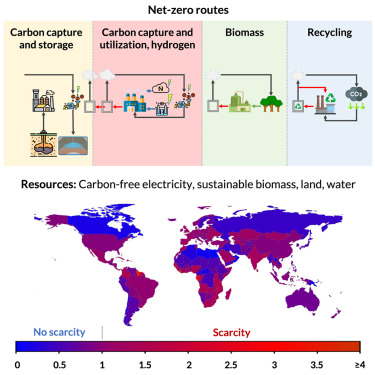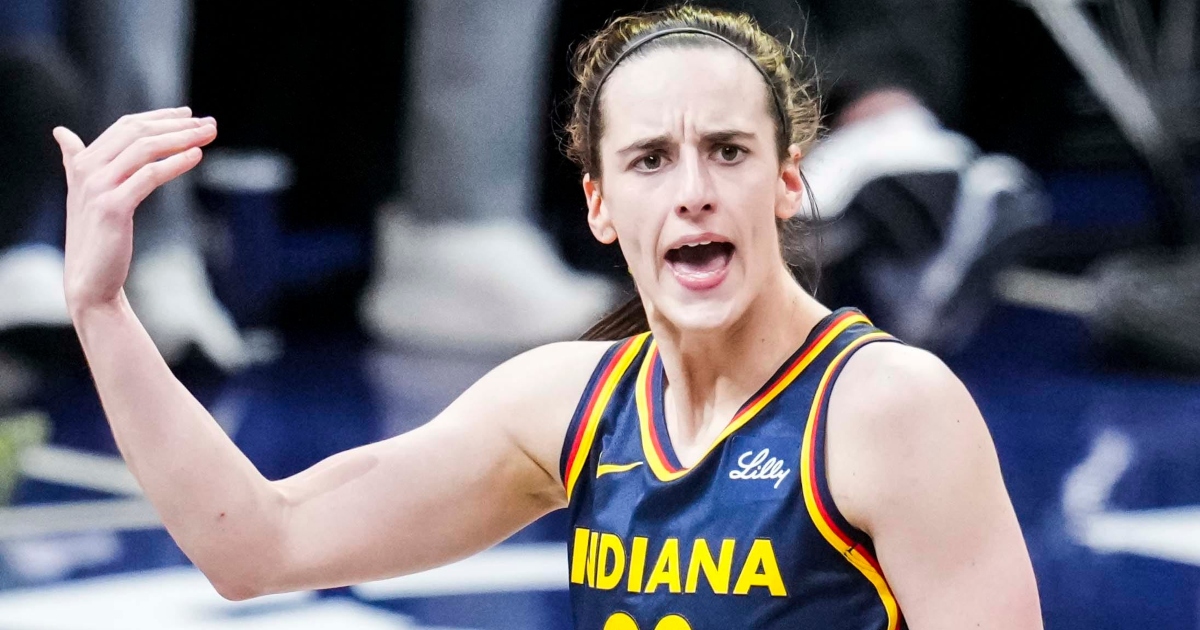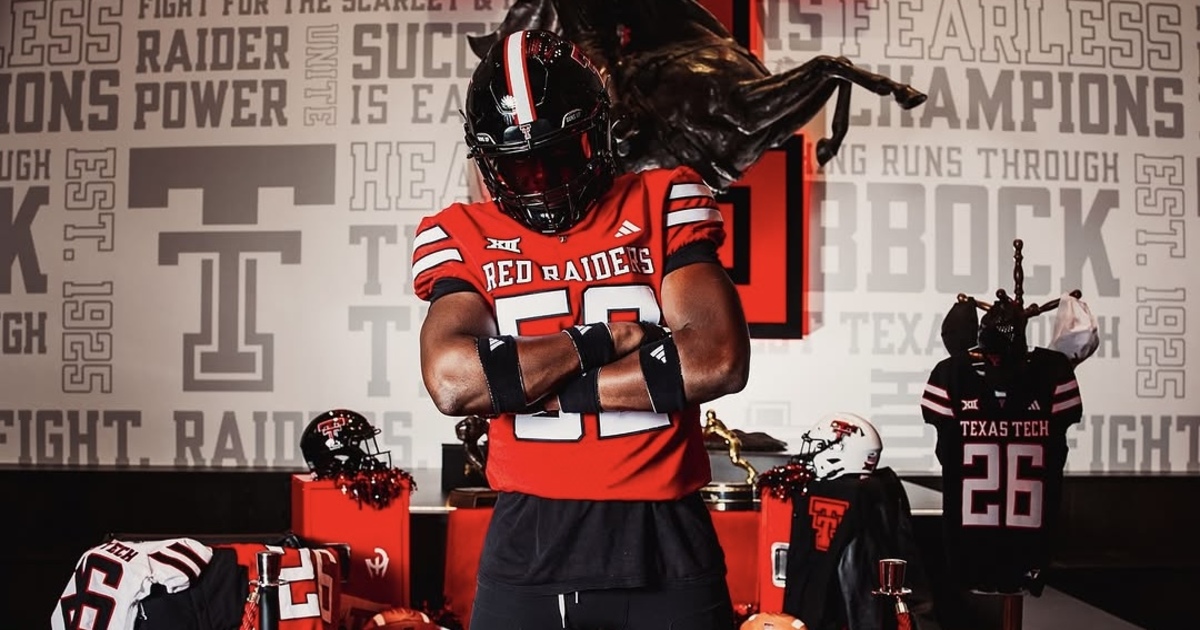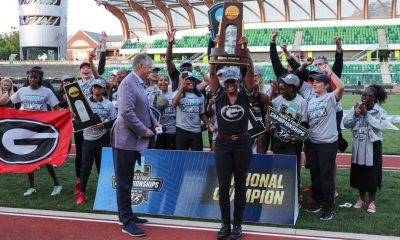NIL
Insights from Top NIL Supporters at the Group of 5 Level
To understand the evolving attitudes of athletics donors at the Group of 5 level, I conducted my final interview with a top NIL donor in April 2025. He was thinking about the major shifts in athlete talent redistribution driven by changes in NIL and the transfer portal. “From my perspective it is a no-win situation. […]


To understand the evolving attitudes of athletics donors at the Group of 5 level, I conducted my final interview with a top NIL donor in April 2025. He was thinking about the major shifts in athlete talent redistribution driven by changes in NIL and the transfer portal.
“From my perspective it is a no-win situation. It starts when I give money to NIL. The coach uses it to pay better players. The coach then leaves for a pay raise and takes all the players with him, and you have nothing to show for it. I would rather just give money to the university.”
He closed with: “Do not BS me with this ‘student-athlete thing’ anymore.”
This donor is not the only NIL supporter to have this point of view. Things have certainly changed in the NIL era, and I empathize with the challenges facing my fundraising friends, particularly at the Group of 5-level.
As more revenue is needed to fuel a championship-level athletic department in the revenue share era, it is important to reexamine one of the biggest sources of revenue: major gift-level donors. Motivations have changed.
The Importance of Major Gift Donors in the NIL Era
Since the start of the NIL-era in 2021, collectives have diversified revenue sources to a mixed degree. Fundraising events, concerts, raffles, on-line auctions, partnerships with businesses, and memberships are much more common now than three years ago.
While these sources provide what is essentially complementary funding, the consensus is that major gifts still account for most of the NIL revenue for programs. Most estimations have major gifts at 70-80% of the overall revenue mix. The importance of major gifts can get lost in the ever-crowded NIL news, but make no mistake, major gifts are the most relevant revenue source.
A major NIL gift varies by program: $100,000+ for the Big Ten or SEC, and $25,000+ for the Group of 5. Regardless of level, big gifts matter. The top five to ten gifts each year are crucial for fundraising and competitive success.
Noted NIL investors, such as Cody Campbell of Texas Tech and Mike Repole of St. John’s, have received well-deserved publicity for their support. But I strongly suspect that the NIL funding success of hundreds of programs in NCAA Division I, including the Group of 5 level, are due to many under-the-radar major gift donors.
Clearly, most programs are not blessed with the level of NIL support that Campbell or Repole have provided their alma maters; however, most programs have their own top donors. The numbers are different, but it is relative.
The Attitudes of Top Group of 5 NIL Supporters
Major college athletics has changed so rapidly that even highly engaged donors do not fully understand the long-term transformation expected with the House settlement.
To get a better understanding of donor motivation, a flash survey was sent to 15 of the top NIL investors from a total of 11 Group of 5-level universities. Each of the 15 individuals polled are among the top five NIL donors at their related institution. Further, each of the Group of 5 conferences was represented in the feedback.
Each of the 15 major NIL investors were posed one question: “What is your biggest motivator to invest in NIL at the highest level?”
The donors had six options to answer the question:
- I want to help athletes.
- I want to help the coach(es).
- I want to help the athletic department and AD.
- I want to help the university.
- I want to win.
- All the above.
Not surprisingly, the most common answer from the major donors was F, “All the above.”
The second most common answer was E, “I want to win.” One donor, affiliated with a Mountain West program wrote, “Not to complicate it. I support NIL to win which in turn will help the university.”
More interesting feedback came from another donor, who is a top NIL donor to a different Mountain West program:
“Honestly, all except A (‘I want to help athletes’) for me. I agree with that statement, but it is for sure last on the list. Purely from a financial standpoint, all students – athlete or not – need to use college to figure their sh*t out. I do not believe anyone should have that financial burden or pressure to help that kid except for themselves and their family.
“NIL is a handout, probably more so at the top end. Easy money now, but (what) does it teach (about) work ethic? If an athlete wants to go out to book appearances and market for a brand, I am all for that, but I believe it should be independent of the school. I understand why we got here, and I hate it.”
For decades fundraisers emphasized, or often led with, “athlete impact” in their compelling narrative to donors. Supported by data from donors in the flash poll, coupled with other data collected during more than 20 consulting engagements by Penry Advisors in the last two years, it is imperative for fundraisers to reshape the traditional giving narrative for college athletics.
The momentous change in college athletics is clear to donors. It has shifted their focus more towards competitive success. Donors have realized that their investments catalyze the success of the most visible marketing arm of universities: athletics, which in turn paints the university in the most positive light. As the donor above candidly shares, their support of athletics has less to do with impacting athlete lives and more broadly the success of programs and universities. This represents a shift in fundraising strategy.
Combating Donor Fatigue
Not all donors have embraced the NIL era. One reason is the belief that NIL does not support athletes’ educational success, a shift from traditional fundraising strategies. However, donors are embracing the changing narrative.
A second reason donors have been slower to embrace investment in the NIL world is because some athletic departments were slow to embrace NIL. The slow-to-embrace approach by departments was often well-intentioned and done out of caution. However, as I often remind clients, “When NIL (or rev share) is not fully embraced internally, how can we expect donors to fully embrace it?”
The well-respected consulting firm Advancement Resources has stated that donor fatigue stems from fundraising organizations continuously asking for loyalty gifts and not for gifts that donors have great interest in making. So then, how can leaders and fundraisers reshape a giving narrative that is interesting and compelling for the present day? While college athletics is different, many of its redeeming qualities remain. A refined narrative is not a desirable, it is a requirement for fundraising success.
Donor fatigue is real and should not be minimized. However, I have found people that possess great wealth will give almost anything if you treat them right and have a compelling vision and plan. They want to be inspired and make an impact.
The Plan: Donor Strategy in the Revenue Share Era
Major gift donors will continue to lead in the revenue share era. Because of the fungible nature of operating budgets, ultimately more revenue via donor funds equals more money to invest in a winning program.
I once read that fundraising legend Si Seymour famously said, “Support flows to promising programs rather than needy” organizations. Investors want to know the plan to thrive.
A plan must articulate an optimistic and realistic path of competitive success moving forward. It also needs to outline the role donors will play in achieving success. A compelling narrative will both reset expectations and create more interest for donors.
Donors know the college athletics landscape has changed, but often they are unaware of the path forward. Supporters, particularly for the Group of 5-level schools, want to know how leaders envision their school as being relevant and thriving in a massively changing landscape that seems to favor those with the most resources.
Emphasis on Excellence Funds
Recently, the creation or reemphasis on unrestricted excellence funds has become a key trend. These funds, such as UNT’s Green Lights Fund, UConn’s Fight On Fund, and Temple’s Competitive Excellence Fund, aim for competitive success and athlete retention.
For many programs, these donor-supported funds will essentially replace the donor funding now funneled through collectives. An in-house effort has two substantial benefits: better coordination of fundraising efforts and seamless donor benefits (e.g., tax deductibility, priority points, stewardship).
Leadership Giving Societies
Strategically, to generate more interest and funding, revenue share giving – via excellence funds – has been paired with a new or existing annual fund leadership giving society. These giving societies frequently provide unique benefits and experiences to incentivize top-level annual giving. Now over half Group of 5 level athletic departments have leadership annual giving societies, and this trend continues to proliferate.
New Scholarships
For traditional donors to college athletics, there is good news. With the expected House settlement, coaches can now scholarship entire rosters. For example, baseball can now give 34 scholarships instead of the current limit of 11.7. Further, programs can count $2.5 million a year in newly funded scholarships towards the revenue share cap of approximately $20.5 million. Scholarships are a fantastic menu item to get donors more connected to the department and are often a pathway to attract new major gift donors.
Donor motivations vary; but most donors want to know they are making a difference to produce more competitive sport programs. Unrestricted excellence or enhancement funds, annual fund leadership giving societies, and expanded scholarship programs are three areas that will have impact on competitive success in this new era.
Takeaways
- Big gifts are the largest revenue source for most NIL collectives and will significantly impact the revenue share era. Top-level donors provide a competitive advantage.
- To combat donor fatigue, leaders must reshape the giving narrative with new expectations and optimism, emphasizing competitive success.
- To invest at the highest level, donors to know how leaders envision their school will be relevant and thrive in the significantly changed landscape.
Jason Penry has 20 years of experience in consulting for universities. Penry was the second-ever holder of the James W. Aston ’33 University Chair in Institutional Development, established in 1985, at Texas A&M University. Penry spent over a decade in university leadership as a chief advancement officer/vice president/vice chancellor at Arkansas State and Angelo State/Texas Tech System.
NIL
The Clemson Insider
CLEMSON — It all started in an empty parking lot in Florence, South Carolina on October 16, 1931. After falling to The Citadel at old Florence Memorial Stadium, Clemson head coach Jess Neely, in his first year, Captain Frank Jervey and a couple of others met in a car outside the stadium to discuss ways […]

CLEMSON — It all started in an empty parking lot in Florence, South Carolina on October 16, 1931.
After falling to The Citadel at old Florence Memorial Stadium, Clemson head coach Jess Neely, in his first year, Captain Frank Jervey and a couple of others met in a car outside the stadium to discuss ways Clemson could help its football program get back on track.
The meeting got the ball rolling towards the establishment of the IPTAY Foundation, which formally began on August 20, 1934. IPTAY, which stood for “I Pay Ten A Year” was the nation’s first scholarship fundraising organization.
Almost 100 years later, IPTAY is still out in front when it comes to helping Clemson Athletics compete at the highest level. But it does not just pay scholarships anymore.
With new NIL legislation in place, plus with the House Settlement now in activation mode, IPTAY is once again the main financial arm that is going to help the Tigers compete in this new revenue-sharing-NIL world of college athletics.
“We are going to try and meet you and be really transparent and communitive because in the last four years we have been in this NIL collective era,” Clemson athletic director Graham Neff said recently on the Mickey Plyler Show on The Roar 105.5 FM. “IPTAY and Clemson have worked a lot with our 110 Society, which is our collective. We have been encouraging dollars there, but we are going to transition the 110 Society to sun set or digest into Clemson and IPTAY.”
How can fans support Clemson Athletics? How can fans give to NIL?
“Now it is really going to be going back to IPTAY,” Neff said. “Our scholarship dollars are increasing significantly. We’re going to be really communitive with our commercial NIL.”
In other words, if someone wants to give to NIL, they can do it through IPTAY. If a small or medium size business owner wants to help with NIL at Clemson, they can now go through IPTAY.
Like it did nearly 94 years ago in that small parking lot outside Florence Memorial Stadium, IPTAY is ushering Clemson Athletics into the future, so the Tigers can continue to compete at the highest level.
NIL
Commit! Texas Tech lands 2026 five-star OT Felix Ojo
Texas Tech landed the No. 1 rated offensive tackle in the country in Felix Ojo, who announced his commitment Friday, on July Fourth, which also happens to be his birthday. The 6-foot-6, 275-pound offensive lineman out of Mansfield (TX) Lake Ridge chose the Red Raiders over reported offers from Alabama, Arizona State, Arkansas, Auburn, Baylor, […]

Texas Tech landed the No. 1 rated offensive tackle in the country in Felix Ojo, who announced his commitment Friday, on July Fourth, which also happens to be his birthday. The 6-foot-6, 275-pound offensive lineman out of Mansfield (TX) Lake Ridge chose the Red Raiders over reported offers from Alabama, Arizona State, Arkansas, Auburn, Baylor, Boston College, California, Colorado, Duke, Florida, Florida State, Georgia, Georgia Tech, Houston, Kansas, Kansas State, LSU, Memphis, Michigan, Mississippi State, Missouri, Nebraska, Notre Dame, Ohio State, Oklahoma, Ole Miss, Oregon, Penn State, Pittsburgh, Purdue, SMU, Stanford, TCU, Tennessee, Texas, Texas A&M, Texas State, UCLA, USC, Utah, Vanderbilt and Washington.
The five-star recruit is rated as the No. 5 overall player in the nation, No. 1 offensive tackle in the country, the No. 2 overall prospect in Texas for the 2026 class according to 247Sports. The 247Sports Composite, an average of the major recruiting rankings services, rates Ojo about the same as a five-star recruit, the No. 7 overall prospect in the country, the No. 2 offensive tackle in the nation and the No. 1 overall player in the Lone Star State.
Simply put, if Ojo’s commitment holds and he signs with the Red Raiders, he’ll supplant Micah Hudson as the highest rated recruit to sign with Texas Tech in the modern college football era, and most likely, in the program’s entire history.
Ojo recently released a top four without Texas Tech in it, but the Red Raiders made a late push and secured Ojo’s commitment. Texas Tech has been on fire this week, picking up commitments from Composite four-star safety Donovan Webb on Wednesday, Composite four-star running back Ashton Rowden on Thursday and now Ojo today.
The five-star recruit took an official visit to Raiderland back in April, which helped the cause. Inside the Red Raiders caught up with Ojo following the visit.
“The visit went great overall and my favorite part was seeing the facilities and touring campus,” Ojo said. “The training room and how top tier it is (was my favorite part), and I talked with Blanchard, both McGuire’s and they made it known I was a priority and felt confident they could take me and make me into a first-round pick.”
247Sports national recruiting analyst Gabe Brooks provided the following projection of Ojo’s potential at the next level and beyond:
“Tall offensive tackle prospect who’s very young for his recruiting class with a July DOB. Verified at 6-foot-6, 272 pounds post-junior season with adequate length numbers in arm (33 5/8) and wingspan (81 1/2). Owns a lean, athletic look and plays with impressive functional athleticism and movement ability. Live evaluation during 2025 Navy Army All-American Bowl revealed a consistent mean streak in pads. Stood out physically, athletically, and in field demeanor despite being among the youngest competitors in the event. Hand placement/technique have improved from sophomore to junior year, along with ability to stand up to POA strength. Gets good extension and uses length to his advantage. Still developing consistent pop; can be grabby, but looks to finish with authority. Plays upright at times and can show more frequent bend ability. Will continue to bulk given immense frame potential. Bolsters athletic profile with discus reps. Capacities for strength and power are high given excellent physical tools and relative youth. Looks like one of the top OT prospects in the 2026 class with potential to become a multi-year high-major tackle with ample pro potential.”
Ojo is the 18th pledge of Texas Tech’s 2026 class joining quarterback Stephen Cannon, running back Ashton Rowden, receiver Imari Jehiel, offensive linemen Jacob Crow and Jerald Mays, three-star edges Tieson Ejiawoko and Demarcus Marks, three-star defensive linemen Ayden Johnson and Krush Johnson, three-star linebackers Cord Nolan and Kaegan Ash, plus three-star defensive backs Donovan Webb, S’Vioarean Martin, Aaron Bradshaw, Noah Lewis, Luke Bell and Maddox Quiller. Texas Tech’s class ranks 23rd nationally, and tops in the Big 12. With the commitments of Webb, Rowden and Ojo this week Texas Tech has jumped 26 spots in 247Sports’ national recruiting rankings. The Red Raiders signed the No. 48 high school and No. 2 transfer groups for an overall national ranking of No. 22 in 2025.
NIL
Carolyn Peck: Indiana Fever are ‘more dangerous’ without Caitlin Clark
Caitlin Clark has missed the Indiana Fever’s last four games due to a groin injury. However, the Fever haven’t let Clark’s absence slow them down. The Fever are on a three-game win streak, and recently added to their momentum by defeating the Minnesota Lynx 74-59 in the WNBA Commissioner’s Cup Championship. While some analysts are […]

Caitlin Clark has missed the Indiana Fever’s last four games due to a groin injury. However, the Fever haven’t let Clark’s absence slow them down. The Fever are on a three-game win streak, and recently added to their momentum by defeating the Minnesota Lynx 74-59 in the WNBA Commissioner’s Cup Championship.
While some analysts are excited to see how much further the Fever will improve when Clark returns, others don’t believe the team’s recent success without Clark is a coincidence. On Friday, ESPN analyst Carolyn Peck claimed the Fever are “more dangerous” without Clark on the court.
“Indiana is even more dangerous when Caitlin Clark doesn’t play,” Peck said. “Because she’s a ball-dominant guard. The ball is in her hands a lot, so you know what you need to try to take away. But when you look at Indiana now, they’ve got so many weapons.
“… When you have a point guard like Kelsey Mitchell, and Aari McDonald making plays on the perimeter, and a post like Aliyah Boston, I’m gonna tell you: Indiana, they are a threat. And it’s specifically on the defensive end. Stephanie [White’ is so pleased with the intensity that they’re bringing defensively with their length, their switches. They’ve wreaked havoc on their last two opponents.”
Despite the Fever’s recent success, the team is 5-4 when Clark is healthy this season and 5-4 when she’s unavailable. Thus, there’s been no change in the win-loss record with Caitlin Clark sidelined due to injury.
This reality can be interpreted in two ways: The Fever are just as good without Clark on the court, or the Fever aren’t better off without Clark. Evidently, Peck belongs to the former camp.
In fairness, Clark has struggled to find a rhythm this season due to her injuries. The 2024 WNBA All-Star’s efficiency is particularly suffering. Clark is only shooting 39.7% from the field and 29.5% from beyond the arc this season, compared to her 41.7% and 34.4% splits last season.
Nonetheless, the former Iowa standout is still averaging 18.2 points, 5.0 rebounds and 8.9 assists per game this season. With that said, Peck isn’t the only one who isn’t sold on Clark’s talents.
Earlier this week, Caitlin Clark’s fellow WNBA players voted her as just the ninth-best guard in the league. The WNBA All-Star votes are comprised of three groups: fans, media and current players.
Although Clark didn’t receive the utmost respect from other WNBA players, she was No. 1 in the fan vote and No. 3 in the media vote. In turn, she will be a captain in the All-Star Game.
NIL
Report: Five-star OT Felix Ojo inks fully-guaranteed 3-year, $5.1 million rev share deal with Texas Tech
Mansfield (TX) Lake Ridge five-star offensive tackle Felix Ojo, one of the top prospects in 2026, made a Fourth of July commitment to Texas Tech. The Red Raiders will now be paying him quite well with an unprecendented, fully guaranteed revenue-sharing deal. Ojo committed to Texas Tech this afternoon over top schools like Texas, Oklahoma, Michigan, Ohio […]

Mansfield (TX) Lake Ridge five-star offensive tackle Felix Ojo, one of the top prospects in 2026, made a Fourth of July commitment to Texas Tech. The Red Raiders will now be paying him quite well with an unprecendented, fully guaranteed revenue-sharing deal.
Ojo committed to Texas Tech this afternoon over top schools like Texas, Oklahoma, Michigan, Ohio State, and Ole Miss. ESPN’s Eli Lederman reported that the Red Raiders signed Ojo to a fully guaranteed revenue-share deal worth $5.1 million over three years. On3’s Pete Nakos reported more details of the agreement.
Ojo’s guaranteed rev-share amount is roughly half the $5.1 million, according to Nakos, and the contract pays out $775,000 per year over three years. Including incentives and if the deal is renegotiated, the five-star offensive lineman is set to earn $1.2 million in Year 1, $1.6 million in Year 2 and $2.1 million in Year 3. Nakos added Texas Tech softball helped pull the deal off.
This comes a few days after the House v. NCAA settlement took effect around college athletics. Judge Claudia Wilken approved the settlement back on June 6th after nearly five years since the filing of House v. NCAA. That allowed for revenue-sharing, with schools paying athletes directly, beginning earlier this week on July 1st.
Ojo ranks as the No. 6 overall recruit as a five-star prospect in the 2026 cycle. He also rates as the No. 3 OT in the class, behind Jackson Cantwell (No. 1 – Miami) and Immanuel Iheanacho (No. 4 – Oregon). He is also the No. 1 player in the state of Texas, according to the On3 Industry Ranking, a weighted average that utilizes all four major recruiting media companies. Following his July 4th commitment, Ojo becomes Texas Tech’s highest-rated commitment of all time as part of what’s shaping out to be a Top-25 class for the Red Raiders in 2026.
This comes after the spring where Texas Tech became a national player in the NIL and transfer portal landscape. The Red Raiders are coming off of an 8-5 2024 season in Year 3 for head coach Joey McGuire, who signed the No. 1 class in the NCAA Transfer Portal, according to On3. Eight of their 21 portal additions this offseason ranked in the Top-100 of On3’s 2025 Top Transfer Portal Players. Expectations are now becoming more real for the program down in the Big 12, especially if they can capitalize on this season after recruiting success both in the portal and in high school.
For today, though, Texas Tech can enjoy what is the commitment of their highest-ranked recruit in school history. Ojo can celebrate as well with his recruitment ending in what’s reportedly a very large, guaranteed deal for him ahead of his collegiate career in Lubbock.
NIL
Cal Baseball
Nearly all of Cal’s starting infield from the 2025 season has departed to other schools by way of the transfer portal. First baseman Dominic Smaldino, who led Cal in RBIs this past season, became the third starting Cal infielder to enter the transfer portal, and Smaldino has committed to Arizona State, according to Baseball America […]



Nearly all of Cal’s starting infield from the 2025 season has departed to other schools by way of the transfer portal.
First baseman Dominic Smaldino, who led Cal in RBIs this past season, became the third starting Cal infielder to enter the transfer portal, and Smaldino has committed to Arizona State, according to Baseball America and other sites.
Smaldino, who was a sophomore this past season, started 54 games for Cal in 2025. He hit .277, was second on the team in home runs with 11 and had 46 RBIs, which was seven more than anyone else on the team. He also scored 48 runs, which tied for the team lead.
Cal shortstop PJ Moutzouridis, who was a Pac-12 all-conference selection in 2024 as a freshman, is also transferring to Arizona State, while Golden Bears second baseman Jarren Advincula, a 2025 second-team all-ACC pick as a sophomore, is transferring to another ACC school, Georgia Tech.
Arizona State and Georgia Tech both played in the NCAA tournament this year.
Advincula hit .342 this past season, with six homers, 33 RBIs, a .506 on-base percentage and 13 steals in 15 attempts in 2025.
Moutzouridis had a .270 batting average, along with three home runs, 31 RBIs, a .329 on-base percentage and 10 steals in 13 tries this season.
The only member of Cal’s starting infield who has not entered the transfer portal is third baseman Cade Campbell, who was a third-year sophomore this past season when he hit .313 with eight home runs and 39 RBIs.
The Bears finished the 2025 season with a 24-31 record, including 9-21 in the ACC, and they won two games in the single-elimination ACC tournament before being eliminated by Georgia Tech in the quarterfinals.
Recent articles:
Alysia Johnson Montaño’s long wait for Olympic justice finally coming
A closer look at how Cal’s new co-athletic directors will operate
Former Cal center Mady Sissoko gets a summer-league shot with the Thunder
NIL
5-star recruit gets massive guarantee to sign with budding NIL powerhouse
Not many programs are spending on the level that Texas Tech is spending as the Red Raiders look to become a college football powerhouse despite a history of being a middling Big 12 program. With traditional rivals like Texas, Texas A&M, and Oklahoma all in the SEC, the door has opened for Texas Tech to […]

Not many programs are spending on the level that Texas Tech is spending as the Red Raiders look to become a college football powerhouse despite a history of being a middling Big 12 program. With traditional rivals like Texas, Texas A&M, and Oklahoma all in the SEC, the door has opened for Texas Tech to become a dominant program in the Big 12.
Just a few months after signing one of the top Transfer Portal classes in the country, a commitment on Friday signaled that the Red Raiders are not anywhere close to done throwing around big money to entice prospects to Lubbock.
After being considered a lean to Texas for the majority of the recruiting process, 5-star OT Felix Ojo, the No. 7 overall prospect in the country according to the 247 composite rankings, announced his commitment to Texas Tech. Ojo becomes the highest-rated recruit in program history for Joey McGuire’s team. In order to land the nation’s No. 2 OT, Texas Tech ponied up the dough:
Five-Star OT Felix Ojo will join Texas Tech on a fully-guaranteed 3-year, 5.1M Deal, per his agent Derrick Shelby of @PrestigeMgmtLLC
It’s believed to be one of the largest guaranteed deals in CFB historyhttps://t.co/p5CYQomCVB pic.twitter.com/Pft40wpRm3
— Hayes Fawcett (@Hayesfawcett3) July 4, 2025
In the new revenue-sharing era of college football, these deals will be more publicized. With a clearinghouse having to greenlight any NIL payments over $600, one can assume that this $5.1 million over the next three years will come directly from Texas Tech’s revenue share.
Assuming Tech’s revenue share is the standard $20.5 million, and assuming they allocate 75% of that to football, that leaves them with $15.375 million per year to distribute to their roster however they see fit. Ojo’s deal is a $1.7 million average annual value, meaning he will command over 11% of the revenue share dollars at their disposal.
Texas Tech has lived in the shadow of rivals like Texas and Texas A&M for many years. Now, with those programs and Oklahoma in a different conference, the Red Raiders see an opportunity to elevate their own standing.
They are flush with West Texas oil money, not to the same degree as their former rivals, but still plenty to invest in their football and basketball programs.
Texas Tech was a big spender in the Transfer Portal this offseason. As a result, they are a popular pick to win the Big 12 and make the College Football Playoff.
The Big 12 is wide open, and even with the rumored playoff changes, winning the league will guarantee a berth. With the aggressive nature of Tech’s spending, they figure to be a perennial Big 12 contender and one of the programs that are the biggest winners of this new era of the sport.
-

 Health3 weeks ago
Health3 weeks agoGymnast MyKayla Skinner Claims Simone Biles 'Belittled and Ostracized' Her amid Riley …
-

 Motorsports3 weeks ago
Motorsports3 weeks agoNASCAR in Mexico City: Where to watch, start time, stream, lineup, race preview for inaugural Viva Mexico 250
-

 Motorsports3 weeks ago
Motorsports3 weeks agoNASCAR Race Today: Mexico City start times, schedule and how to watch live on TV
-

 College Sports1 week ago
College Sports1 week agoWAC to Rebrand to UAC, Add Five New Members in 2026
-

 High School Sports3 weeks ago
High School Sports3 weeks agoNew Bedford top stories
-

 College Sports3 weeks ago
College Sports3 weeks agoLivvy Dunne honors boyfriend Paul Skenes with twist on LSU jersey
-

 Health3 weeks ago
Health3 weeks agoKyrie Irving's Strong Message Amid Men's Mental Health Awareness Month
-

 Technology2 weeks ago
Technology2 weeks agoPolar is teasing a Whoop alternative without subscription
-

 Sports3 weeks ago
Sports3 weeks agoGeorgia women soar to first outdoor track championship
-

 Motorsports3 weeks ago
Motorsports3 weeks agoParker Kligerman Mourns Loss of NASCAR Team Owner in Moving Tribute




































